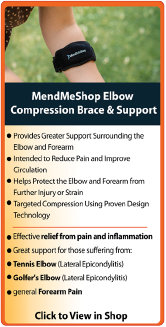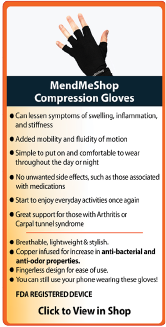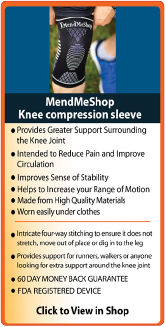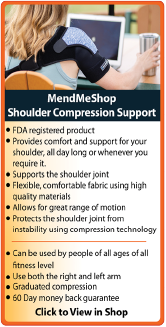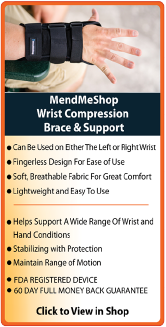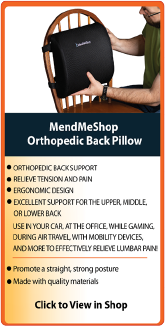|
|
Foot Tendonitis Symptoms & Treatments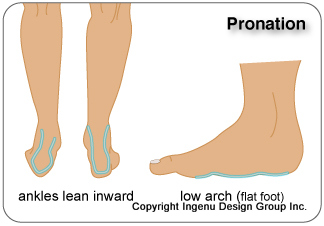 It may be hard to believe but any other injury or condition affecting your ankle, knee, hip or back that changes the way you walk (biomechanics or the way your foot hits the ground) in order to compensate for that injury can lead to foot tendonitis. This includes conditions like arthritis in your ankle or foot. If you have arthritis or osteoarthritis, this means that the bone and cartilage in your joint is already wearing away - it's a natural progression as we age. Arthritis can eventually lead to tendonitis as the joints in your feet and ankles become weaker. Calcium deposits in and around the foot or ankle joint is another cause of foot tendonitis, and is often referred to as Calcific Tendonitis. Symptoms of a Ruptured Tendon in the FootIf you suffer from a foot tendon rupture (ruptured tendon) you might hear a sudden pop or experience severe pain immediately after you're injured. Tendon ruptures usually only happen from accidents or pre-disposed conditions that weaken the tendon - like repeated anti-inflammatory injections, calcium deposits (spurs) in and around your foot or ankle joints or other diseases (ie. gout). Tendon ruptures usually require surgery to re-attach the tendon to the bone, and if left untreated can result in permanent disability in your foot. Do You Really have Foot Tendonitis?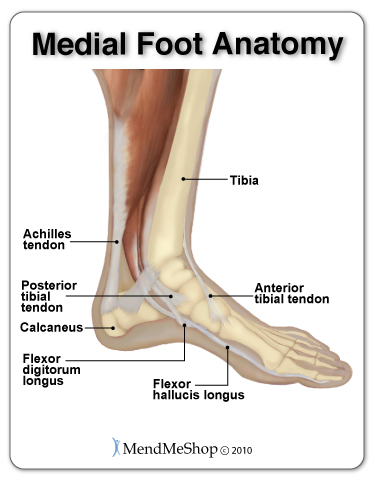 Foot tendonitis is only one of many conditions that can cause pain in your foot. Our feet are some of the most complicated joints in our bodies with 26 bones, 33 joints and more than 100 tendons, muscles and ligaments (reference: 1). Considering how complicated the foot joint is - it's easy to see how so many things can go wrong, leading to chronic foot pain and injuries. The fact that this joint is so complicated does make understanding your foot pain even more problematic. Foot injuries are so common that 1 in 3 people over 65 have foot pain and 87% of people in the US will suffer from a foot injury or foot pain at some point in their lifetime (reference: http://www.healthinaging.org/aging-and-health-a-to-z/topic:foot-problems/). A lot of foot injuries can create pain in the same area, and many foot injuries are caused by overuse, degeneration, improper technique / posture during activity and poor biomechanics. For example, you might have pain around the heel or ball your foot that could really mean you have a plantar fasciitis injury or sesamoiditis. In both of these examples the cause of your pain could be tendonitis in the tendon tissue, but you may also have some other underlying conditions such as a fracture in one of the bones in your foot, or a bone spur (calcium deposit). 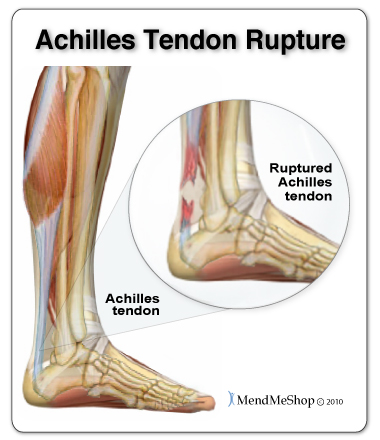 Some people will have other foot or ankle injuries, like Achilles Tendonitis, and think that they have foot tendonitis. When researching online or speaking to your doctor, you'll find that foot and ankle issues are often used to describe foot tendonitis interchangeably. It's easy to get many of these injuries mixed up because everything in the body is connected, and sometimes the pain from one injury will be felt nearby or in a different area of the body. What kind of Foot Tendonitis do You Have?The most common forms of foot tendonitis are Posterior Tibial Tendonitis and Peroneal Tendonitis. Both of these types of tendonitis affect the sides of your foot. It's common to have one of these injuries and feel pain in the top of your foot or even in your ankle. Toe Deformities can sometimes also lead to chronic foot tendonitis pain. 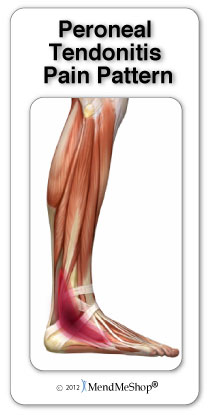 If you have posterior tibial tendonitis you'll feel pain on the inner side of your foot. With this condition most pain is felt during the "push off" motion done with walking. If you have peroneal tendonitis you'll likely feel pain on the back and outer side of your foot and ankle. This injury will create radiating pain that you'll feel when standing and pushing off with your foot when walking. When it comes to toes deformities, you'll definitely know when you have this injury because there will be a visual difference in the shape or bend of your toes. The 3 most common forms of foot deformities are hammer toe, mallet toe and claw toe. Along with these abnormalities, those who also suffer from bunions (hard bumps on the big toe joint) and calluses (thickened skin from friction or pressure) may also be at risk of getting foot tendonitis. In most cases bunions and calluses will develop from improperly fitted shoes - if your toes don't have enough space or the widest part of your foot (near your toes) rubs up against the inside of your shoes. At this point you're probably asking yourself... What Should I Do?If you think that you're suffering from foot tendonitis and your mobility is steadily declining the first thing you need to do is see your doctor. Only your doctor can give you a proper diagnosis and from this, determine a course of proper treatment. If you suspect you have tendonitis in your foot,
Re-injury of your foot must be avoided at all costs!Constant re-injury needs to be avoided at all costs. Obviously, it delays the healing process, but what's worse is that every re-injury and additional healing cycle increases the amount of scar tissue that builds up in the area of your original foot tendonitis injury. 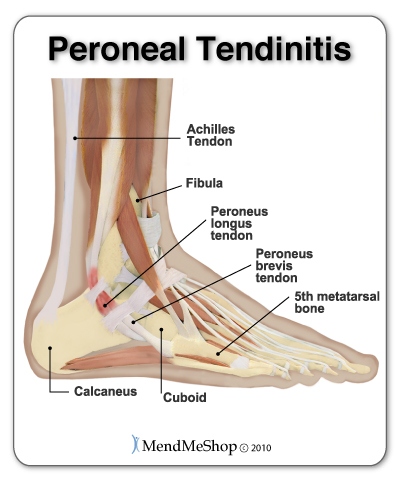 Scar tissue is hard, inflexible, and tough to get rid of. The more severe your foot tendonitis is, the more likely that this scar tissue will make your tendon much more prone to injury again later on. The more scar tissue that develops, the more you lose the range of motion in your foot and ankle. Continuous re-injury and build-up of scar tissue while staying active means you'll have a greater chance of winding up with on-going pain, more tearing in your tendon, tendinosis (thickening of your tendon) or a full rupture. If you have pain and inflammation in your foot or ankle, it's very important to heal your injury quickly and completely. You must avoid the build up of scar tissue. If you don't, your foot tendonitis injury may plague you forever. This is why it's so important to continuously use conservative treatment tools to heal any recurring tendon damage before it can build into something big. For any foot tendonitis sufferer, having the right tools means all the difference. No one is immune to tendonitis, you can easily reduce your risk of further re-injury with consistent conservative treatments Mild and moderate cases of tendonitis / strained tendons are best treated with conservative home treatments. Severe injury to the tendon (ruptured tendons) will require surgery to re-attach the tendon to your bone. If you suspect that you've ruptured your tendon be sure to speak with your doctor for suggested treatment. Foot Tendonitis Home Conservative Treatment Options!Step 1 - Reduce Pain and Swelling with Cold CompressionThe first step for conservative treatment of your foot tendonitis is to reduce the swelling to "open up" the area for more blood flow. Anyone in the health-care business knows that your blood supplies the oxygen and much needed nutrients required to heal foot tendonitis injuries. This is why for years, doctors, trainers, and other medical professionals have recommended RICE (Rest, Ice, Compression, Elevation) to treat the pain and swelling of fresh injuries, chronic pain, and after any re-injury. This is important because once blood vessels are blocked or damaged, they can no longer carry oxygenated blood to your damaged tendon and tissues begin to break-down. Without cold compression, tissues break down further because they can't get the oxygen they need to survive. By limiting the amount of damage done to your tendons, you also limit the amount of healing that needs to occur. This is a very important step to heal acute or chronic tendon injuries faster and with less pain! Use a Cold Compress or Ice Pack:
Step 2 - Improve Circulation, Soften Scar Tissue & Prevent Re-Injury with a TShellz Wrap®Increased Blood Circulation = Increased Healing CapabilityTShellz Wraps® contain a unique Carbon Fiber Energy Pad which is flexible and will shape to conform to your body. This Energy Pad emits a uniform wave of perfectly safe energy over its entire surface. This energy is absorbed by soft tissue in the treatment area, opening blood vessels, resulting in an increase in blood flow. Increased blood circulation is what your body needs to accelerate the healing of soft tissue and this is why we recommend the TShellz Wrap®. The TShellz Wrap® is an FDA Registered Medical Device and is suitable for use in therapeutic clinics and FROM HOME. It is completely safe for people and patients to use for themselves. The technology found in a TShellz Wrap® has been used for decades in the worlds of professional and amateur sports - a contributing factor as to why athletes seem to recover from injuries so quickly. Have you ever wondered by an athlete can return to activity after 3 or 4 weeks following a tendon injury - while your average person takes much longer to return back to normal? The secret isn't really that much of a secret - it involves consistent treatments (meaning multiple times a day) using a treatment like the TShellz Wrap® to stimulate blood flow to the injured tissues. Most athletes have the luxury of using in-house facilities many times per day. How many us can afford the time and money to visit a clinic multiple times a day? Very few indeed. This is how you can gain some of the advantages that athletes enjoy in their injury recovery - by using a device like the TShellz Wrap® two or three times a day on a consistent basis. Consistent Treatments = Consistent And Long Term ImprovementWhat Else Makes the TShellz Wrap® So Special?We believe the TShellz Wrap® to be one of the most effective home treatments to increase localized blood flow in and around the treatment area. We can promise that you will receive a product that is designed to be safe and does what it is supposed to do...quickly relieve pain and aid in the recovery from tendon, muscle and other soft tissue injuries. The unit plugs into a standard wall outlet to get its power. The nice thing about the power supply is that the same unit can be used in North America and overseas as well. It has the capability to operate between 110v and 230v. The TShellz Wrap® has a special signal controller that can be set for 3 different power levels of application (3=High, 2=Medium, 1=Low). The cord is long enough that you can sit or lie comfortably and watch TV, read or surf the net while you're using it. Treatments are max 30 minutes in duration and the device can be worn over clothing. This allows you to use the device at work, at home, or really anywhere you have access to an electrical outlet. Wrap Recommendations:
Click HERE to Go To Our Online Store If you have questions, call our office at 1-866-237-9608 (toll free continental US). A Recap of the Benefits of the TShellz Wrap®..
When Should I Use My TShellz Wrap® During the Day?The most common question we receive from individuals prior to purchasing is - how many times a day should I be using my wrap and when should I be using them? While treatment plans will differ for each individual and their specific injury, there are general guidelines that should be adhered to.
The TShellz Wrap® would then be used:
Step 3 - Stretch Your Foot to Speed Up RecoveryThe final step in foot tendonitis recovery is stretching - this is a critical step for complete recovery from your injury! PTs almost always prescribe gentle stretching for to deal with foot tendonitis, and if no device is available, they usually prescribe something called "heel slides". In a PT clinic, your therapist will help you to perform a heel slide if your foot hurts too much to do it on your own. Outside of the PT clinic (when trying this stretch at home), your therapist might suggest that you try to use a plastic bag, cookie sheet, tension band, belt or any other household tool to help you move your foot. You'll find in most rehabilitation programs heel slide stretching and conservative treatment will help to:
Use These Conservative Treatment Tools |
 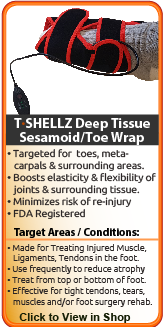 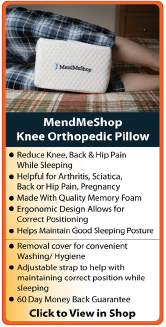 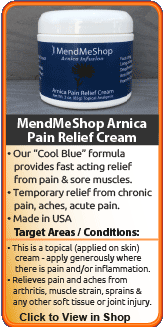 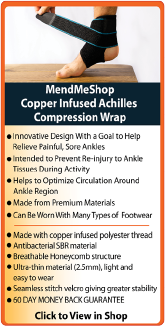 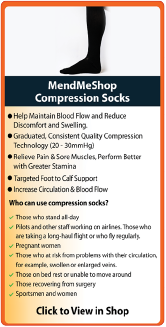 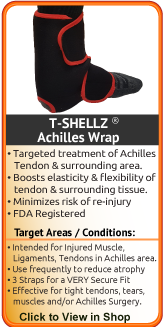   |

